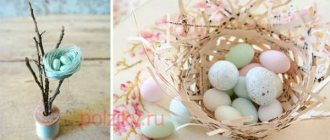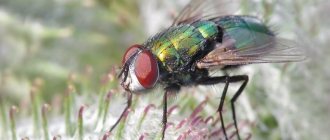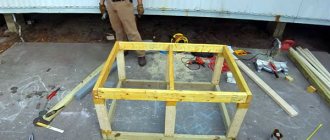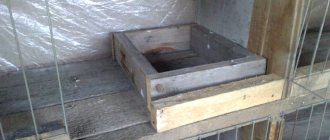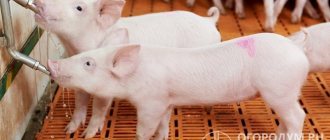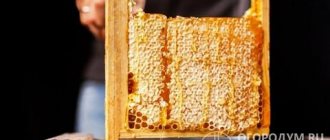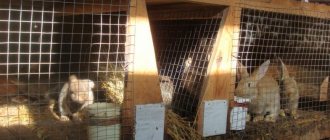Mice live in residential buildings, cafes and shops all year round, but they become especially noticeable as cold weather approaches. Species that live close to humans, but not side by side with them, can migrate closer to warmth and a source of easily obtained food.
Mice cause more damage to human households than rats. Although the latter are less acceptable to people, they are less likely to live directly in residential areas, preferring to be located in waste collection and disposal areas. In addition, mice can reproduce up to ten times a year. Most often, they bother people not because they eat a lot, but because they are omnivorous. Mice chew food, but do not finish it, after which the product has to be thrown away. They gnaw holes in clothes and furniture, build passages through partitions and walls, and leave droppings everywhere. Mice are especially dangerous for electrical wiring. They can try to chew through it, expose the wires and short-circuit them, after which fires sometimes occur. Mice are carriers of salmonellosis and other intestinal and inflammatory infections.
Pros and cons of homemade mousetraps made from plastic bottles
When fighting rodents, it is not necessary to use poisons. A simple solution to the problem would be a trap. The device made from plastic containers is safe for the mice themselves and the people living in the house. If the goal is severe extermination of rodents, the design of the mousetrap is complicated, for example, by supplying electricity.
The designs of most mousetrap models are safe for rodents and people
A homemade bottle mousetrap assembled with your own hands has many advantages:
- When compared with store-bought counterparts, most mousetraps are made with one charge. That is, after catching the mouse, it needs to be recharged. If a person does not live at the dacha permanently, then to exterminate rodents you will have to purchase a lot of such products, and this is already a decent expense. A homemade device will cost free. One plastic container can catch up to a dozen mice.
- Another plus is safety. There is no need for the mandatory use of pesticides. The mousetrap is completely safe for pets and people living in the house. The baits used will not cause allergic reactions.
- A rodent that has penetrated the bait is completely isolated from the environment. The threat of unsanitary conditions is eliminated. If you use pesticides, the mouse does not die immediately, but hides in a secluded place. It is impossible to get it from there. After death, the decomposing body of a rodent will begin to emit a bad odor. In the case of a bottle there is no such problem. Once you catch a mouse, just throw it outside in a trash can or give it to your cat.
Advice!
When there is a threat of a large invasion of mice, it is optimal to make a mousetrap with your own hands from a large plastic bottle. Of the shortcomings, you can find only one point. If a person has no interest in creating homemade products, his first designs may turn out to be ineffective. It is optimal to make a mousetrap as simple as possible the first time.
Mousetrap "mink"
This is an ancient method of catching pests. To do this you will need a block of wood. Drill holes in it and make special loops from threads.
As soon as the mouse chews through the threads, it will immediately be trapped. Before making holes and catch loops, it is recommended that you familiarize yourself with the diagrams of this design.
Better yet, before making this mousetrap, watch the video. This will help you avoid mistakes and make the right trap for pests, which will save summer residents from misfortune.
As you can see, making a mousetrap with your own hands at home from what you have on hand is not at all difficult. The most important thing is to pay attention to the recommendations and choose the right bait.
- Remedies for bedbugs: modern methods and tips on how to effectively remove bedbugs (110 photos + video)
How to get ants out of the house - reasons, methods and recommendations on how to get rid of them once and for all (100 photos)
How to get rid of small midges - how to get rid of them once and for all at home (85 photos)
You can fight pests in different ways: choose poisons designed to poison all pests in the area, purchase special mousetraps made on a production scale, or make them yourself with your own hands. However, it is an indisputable fact that it is imperative to fight them.
How to make a mousetrap from a plastic bottle
To assemble a trap, you first need an idea. Finding it will not be difficult on the Internet. You also need materials and tools. You must not forget about the bait, otherwise the rodent will not approach the mousetrap.
Model selection
The bottle is only a container where the caught mouse will stay. However, it needs to be modernized so that the animal does not escape from there.
A mouse can even crawl through the neck of a bottle.
Of the many types of mousetraps, the following types are often used:
- The petal trap is considered the simplest. This can be done in a couple of minutes by cutting the back of the bottle into petals. The downside is unreliability. The mouse is able to escape from the mousetrap.
- The falling trap is considered effective. The rodent will not get out of it. However, after catching one mouse, such a mousetrap will have to be recharged.
- The rocking chair is the most effective, but difficult to manufacture mousetrap. The design has worked flawlessly for many years.
Among other options, you can also pay attention to a mousetrap with oil or an electric model, where the rodent instantly dies from an electric shock when hit.
Advice! Mice are quite cunning and resourceful animals. Don't underestimate their skills at getting out of traps.
Tools and materials
The first material you will need is plastic containers. The volume will depend on what kind of mousetrap design is intended to be made. The most commonly used bottles are 1.5 and 2 liters. You may also need tape and wire. You definitely need bait.
The tools are simple: scissors, marker, stationery knife.
A simple mousetrap from a bottle in a few minutes
For your first experience, just try to make a simple trap. It will take a maximum of 5 minutes. Using a knife, cut off the bottom of a bottle with a capacity of 1-1.5 liters. On the side walls from the cut side, draw triangular teeth with a marker. The length is determined individually, which depends on the diameter of the bottle. The teeth are cut out with scissors and bent inside a plastic container. The sharp ends should almost close together, forming a small hole.
The bottom of the plastic container is cut with teeth
A simple mousetrap made from a plastic bottle, assembled with your own hands, works according to the classic trap method. The bait is placed inside the container. The rodent follows its scent and penetrates the bottle. The teeth concave inwards give him the opportunity to do this, but they will not release him in the opposite direction.
Important! The bottle cap must always be closed.
How to make a rocking mousetrap from a plastic bottle
The trap is also called a pendulum due to its triggering method. A rodent that has got inside the bottle tilts it under its own weight, which does not allow it to get back out along the slippery inclined walls.
The materials you will need are a 1.5 liter bottle. It is advisable to find an elongated plastic container with a long neck. The axis on which it will swing is made of aluminum wire. A piece of board is used as a bed.
The axis of the pendulum trap is bent from aluminum wire
The step-by-step instructions for a do-it-yourself bottle mousetrap look like this:
- First, find the location of the axis. The bottle is placed on the table, a pencil is placed under the bottom. Move it until an approximate balance is found.
- On the line of the center of gravity, through holes are pierced through the body of the bottle opposite each other. Insert aluminum wire and bend the support.
- The stand is cut from a board 400 mm long. In the center, under the axis of rotation, you can simply screw in two anchors with a screw thread and a ring. They will act as a support.
- Two bars of equal thickness are attached to the edges of the board. The bottle at the neck has a smaller diameter than near the bottom. Due to the difference in thickness, the plastic container will swing along the axis to a height of 2-3 cm. It will rest on the bars.
- The last step is to place a locking bar on the mousetrap. It is attached to the side of the bottle neck behind the already installed wooden element. The thickness is selected individually. When lowered, the neck should be blocked by a locking bar. When raised, the lower edge of the neck is located at the level of the edge of the bar.
The locking bar should completely cover the neck of the lowered bottle.
A bait weighing 5 g is placed inside the plastic container. The mouse quietly penetrates the mousetrap through the neck along the bar. When moving in the opposite direction, the bottle tilts under the weight of the rodent. The neck is closed by the wall of the locking bar. The rodent is unable to get out no matter how hard it tries.
Oil bottle mousetrap
Another simple version of the trap can also be made in 5 minutes. However, the design is considered more reliable. Rodents will not get out of it. You will need a bottle of 1.5-2.5 liters. The cork is thrown away; it is not needed. The plastic container is cut off with a knife closer to the neck. The cut is made approximately by dividing the bottle into 2/3. The cut off upper part is turned upside down and inserted into the second. The two parts are fastened together with a stapler or wire.
The entrance funnel of the mousetrap is lubricated with oil.
Bait is poured through the neck into the mousetrap, which consists of seeds, grain, and bread crumbs. The walls of the inverted neck are lubricated with oil. Once in the funnel, the mouse slides along the walls and falls into the sump with the bait. In the opposite direction, the rodent is not able to get out.
Simple trap design
How to properly make a mousetrap at home without much effort and expense - many summer residents have probably asked a similar question.
The simplest model of a mousetrap that can be made at home consists of an ordinary large-volume jar (suitable for three liters), cardboard or a plastic plate, and bait (ideally sausage).
From a plate or cardboard, cut out a figure in the form of a boomerang with one blunt end. The sharp part is necessary for suspending the bait.
Now you need to place the jar on the figure so that the bait is in the middle of the jar (the end of the jar is placed on the blunt end of the plastic or thick cardboard figure).
Bark beetles in a wooden house - a description of how to get rid of the borer beetle. Tips on how to permanently remove dangerous parasites (105 photos)- How to get rid of bedbugs - tips on how to remove dangerous parasites from a house or apartment (115 photos and videos)
Cockroach trap: review of the simplest and most effective methods of catching cockroaches (125 photos)
As soon as the rodent reaches for the bait, the figure will fall down and the jar will cover the mouse.
"Falling" homemade mousetrap from a bottle
The falling trap is single-shot. After catching a rodent, it needs to be recharged. Considering that the bottles are free, you can build several mousetraps.
The essence of the invention is that a small hole is cut near the neck of a plastic container sealed with a stopper, through which a rodent can penetrate to the loaded bait. The bottle is tied by the neck with a rope to a support. Place it on any surface raised above the ground. The edge of the bottle should hang down.
The trap falls from the stand due to the weight of the mouse and bait
Since the mouse tries to get to the bait located at the bottom, due to the overweight, the bottle falls from the stand and hangs on the rope. The person can only eliminate the rodent and reload the trap.
Mousetrap bait or how to lure a mouse
Domestic rodents prefer grains and cereals, as well as nuts. But scientists from the University of Kentucky note the diversity of the diet of domestic rodents, in which grains are only the basis:
– Mice eat a variety of foods, but prefer seeds and grains. They also like foods high in fat and protein, such as nuts, bacon, butter and sweets (an important point to remember when choosing bait to rig your trap). Mice can make 20-30 forays per night.
A popular bait among mousetrap users is peanut butter bait, which is convenient to use due to its consistency, making small balls or spreading it on the touch surface of the mousetrap. Contrary to popular myth, they are not crazy about cheese and eat it along with other foods. Therefore, cheese is not always a good bait.
As the aforementioned Michael F. Potter joked, you have to think like a mouse. Better use smoked lard or bacon. In addition to peanut oil, unrefined sunflower oil is suitable. You can moisten a piece of white bread with it. Or simply put roasted sunflower seeds or peanut kernels in a mousetrap.
Bucket and bottle mousetrap
The device resembles a kind of attraction. For this work you will need a bottle, preferably in the shape of a regular cylinder. You also need to take a 5-10 liter bucket, a piece of steel wire and a wooden block.
The trap design resembles an attraction with a rotating barrel
Assemble a mousetrap from a plastic bottle and bucket in the following order:
- A through hole is drilled in the center of the plug and the bottom of the plastic container. A steel wire is inserted through the entire bottle. Its length is slightly larger than the diameter of the top of the bucket.
- The bait is attached to the outside of the bottle. It can even be glued or tied with thread.
- The resulting rotating drum with a wire axis is placed on the upper edge of the bucket, into which 2-3 liters of water are first poured.
- A rack is leaned against the edge of the bucket - a kind of ladder for mice.
The drum with the bait should rotate freely on its axis.
A mousetrap loaded with bait from a bucket and a rotating bottle attracts rodents. They climb onto the drum using a slatted ladder. Due to the overweight, the container rotates, the mouse falls into a bucket of water and drowns.
Electric mousetrap from a bottle
The proposed trap option is complex and can be dangerous for domestic animals. The essence of the design is to destroy the rodent with a discharge of electric current.
The materials you need are a piece of galvanized profile used for lathing when installing drywall. The workpiece is cut to a length of 30 cm. The cut neck of a plastic bottle is glued to the outside with a hot gun.
Electrical circuit elements are located inside the profile
For the electrical circuit you will need a 9-volt Krona battery, a Chinese current converter, a small switch from any household appliance and a piece of stranded copper wire. The elements are mounted inside the profile. The wire is connected in series into one circuit, but not yet closed.
The ends of the wire are brought to the contacts of the trap
Unscrew the plug from the neck glued to the profile. Pieces of steel wire are inserted through the drilled holes. These will be contacts. In the initial state they are open. The plug is screwed back on. One of the contacts is made in the shape of a hook. Bait is strung on it, for example, a lard skin or a piece of smoked sausage. Wires of the electrical circuit are connected to the contacts and profile.
To get to the bait, the mouse climbs onto the stand. When a rodent tries to pull the bait, the contacts inside the plug close. Current from the battery is supplied to the converter. Since the mouse simultaneously becomes a voltage conductor between the profile and the contacts, it receives a fatal discharge.
Harm from mice to humans
In a relatively short period of time, mice can cause serious damage to stored vegetables and fruits and spoil cereals and pasta. Pests chew wires, make nests in various places and carry dangerous infections. Diseases caused by them include:
- leptospirosis,
- hemorrhagic fever,
- tularemia,
- pseudotuberculosis,
- salmonellosis,
- helminthiasis
These diseases can be transmitted:
- by mouse bites,
- in direct contact with their feces,
- by consuming contaminated food or drinks,
- through the bites of parasites that live on rodents,
- when inhaling air containing infectious agents.
The pests are incredibly prolific - they can bear their first offspring as early as the eighth week after their birth, and replenish the population five to ten times each year. On average, an individual lives for about a year in natural conditions. It is surprising that rodents have not yet overrun the entire planet with such indicators. This does not happen only because the total number of mice is regulated by both natural factors and human intervention.
Large mousetrap made from a 5 liter plastic bottle
Another version of a quick-made trap will allow you to get rid of annoying mice. A large plastic container is used, which allows for infrequent recharging. For a mousetrap made from a 5-liter bottle, you will need the container itself. However, first prepare the bait. To do this, the nut is tied to a long nylon thread with loops at the end.
The bait is a nut tied with a nylon thread with loops.
A triangular petal is cut out from the bottle closer to the bottom. It should bend easily into the container, but jam in the opposite direction. The window size is about 2 cm.
The petal should bend inward, but jam in the opposite direction
At a height from the bottom of the bottle, through holes are pierced in the walls. A thread with a nut is threaded through them. At such a height, not every mouse will reach the bait, but it will also not get out of the bottle due to the closed petal.
The best mouse repellers
Modern devices for controlling tailed pests do not act instantly, but are effective. Rodents simply leave a place that is unpleasant for them, and the owners do not have to bother with their disposal or relocation.
Grad Ultra 3D
5
★★★★★
editorial assessment
96%
buyers recommend this product
A professional repeller works in three ways at once: low-frequency changing ultrasonic vibrations, which cause a feeling of anxiety in rodents, ultrasound with a constant frequency (prevents addiction to the effect) and special blue-violet light, which affects the optic nerves of pests and disrupts their wakefulness/sleep cycle. The device can be installed on any surface or attached to a wall.
Pros:
- Operating area up to 1200 sq.m;
- Adjustable power and 4 operating modes;
- Fast action;
- Certified and patented;
- 12 month warranty.
Minuses:
- High price.
The device is perfect for pest control in individual farms, catering establishments, warehouses, barns, granaries and other large facilities.
Mongoose SD-058
4.9
★★★★★
editorial assessment
95%
buyers recommend this product
The action of this device is based on the radiation of five types of waves: four ultrasonic and one ultra-low electromagnetic with varying frequency. Such exposure affects the nervous system and hearing of rodents, forcing them to leave the room.
The device also has a unique function - it releases anions that kill germs and purify the air in the room.
Pros:
- Protection area 100-500 sq. m;
- Acts on cockroaches, ants, spiders, fleas, moths and mosquitoes;
- Harmless to people and pets;
- 3 operating modes with indicator light.
Minuses:
- Cannot be used in very damp areas or outdoors.
An excellent option for a studio apartment that not only gets rid of many types of pests, but also purifies the air in the home.
Features of application
Homemade mousetraps cannot be called 100% effective. Any design can fail. The trap can be placed in a place where it is convenient to observe it from afar. This will make it possible to evaluate performance, find defects and eliminate them.
You can watch the trap in action from cover to find out its weak points.
There are three requirements for plastic mousetraps:
- It is advisable to replace plastic bottles once a month;
- pesticides cannot be used instead of bait;
- The design of the mousetrap should be simple so that it can be easily replaced with a new one.
Even multi-charged mousetraps need to be emptied more often. Trapped rodents send a panic signal. Other individuals may not go into the trap.
What baits can be used
Today, not only “food from the table” is placed as bait for rodents, but also animals are lured with various flavoring and aromatic additives. You can buy them in specialized stores that also sell mousetraps. What's better to put in a mousetrap?
Products
Food provided as a “treat” should have a pleasant smell that would cause the parasites to salivate. It's best to put:
- raw minced meat with onions;
- smoked cheese or fish;
- sausage;
- baking;
- wheat grain;
- unrefined vegetable oil;
- smoked or salted lard.
The aroma of these products reaches far and can lure the victim into a trap within a short time.
You will have to wait much longer for the rodent if you place it in a mousetrap:
- dry cheese or pastries;
- cheap sausages;
- spoiled products;
- fruits;
- sweets.
If within a few days the rodent does not come for a treat, it should be replaced with a fresh one!


